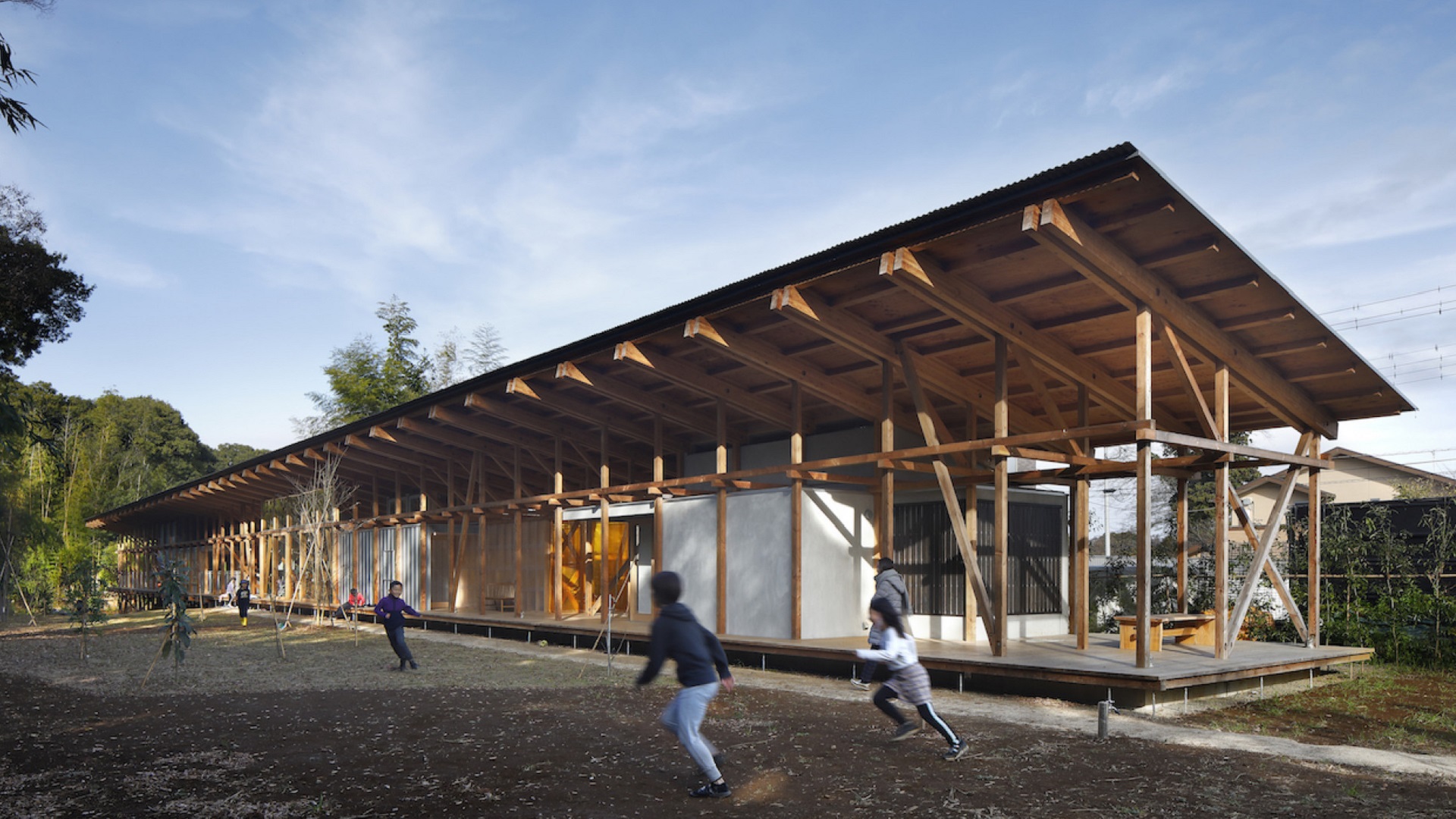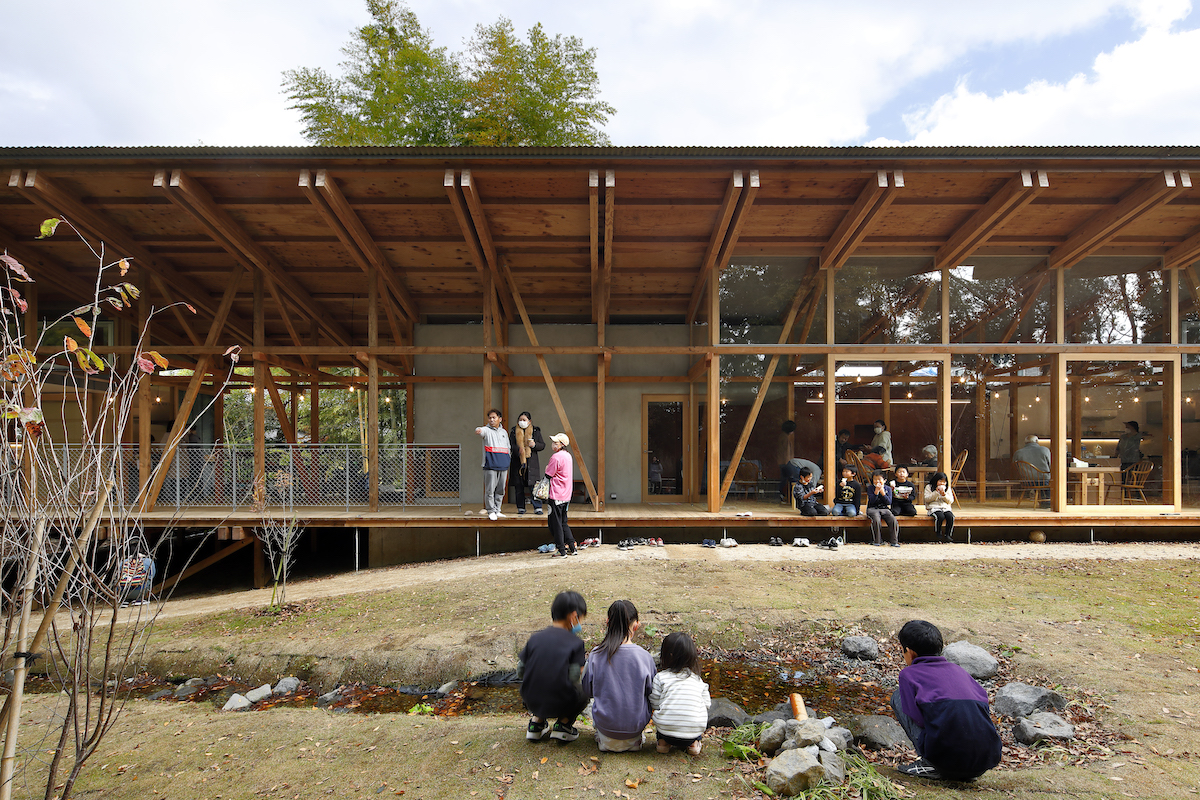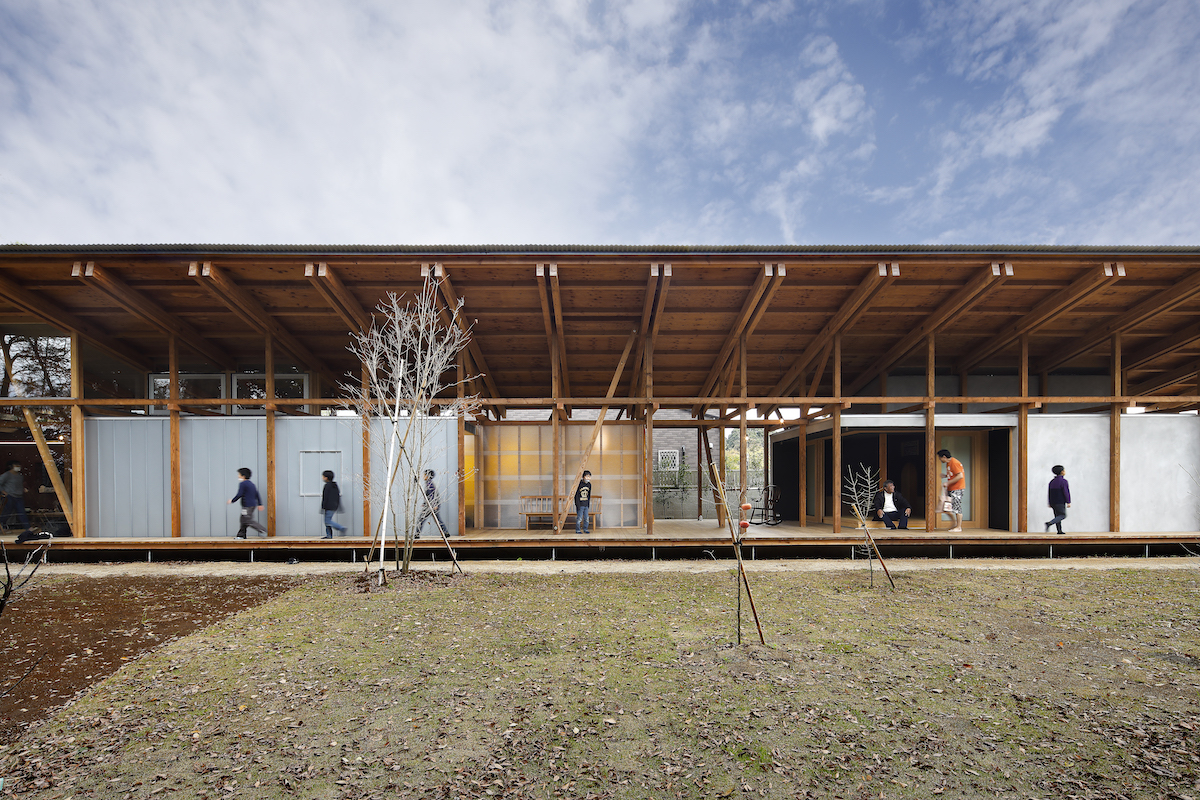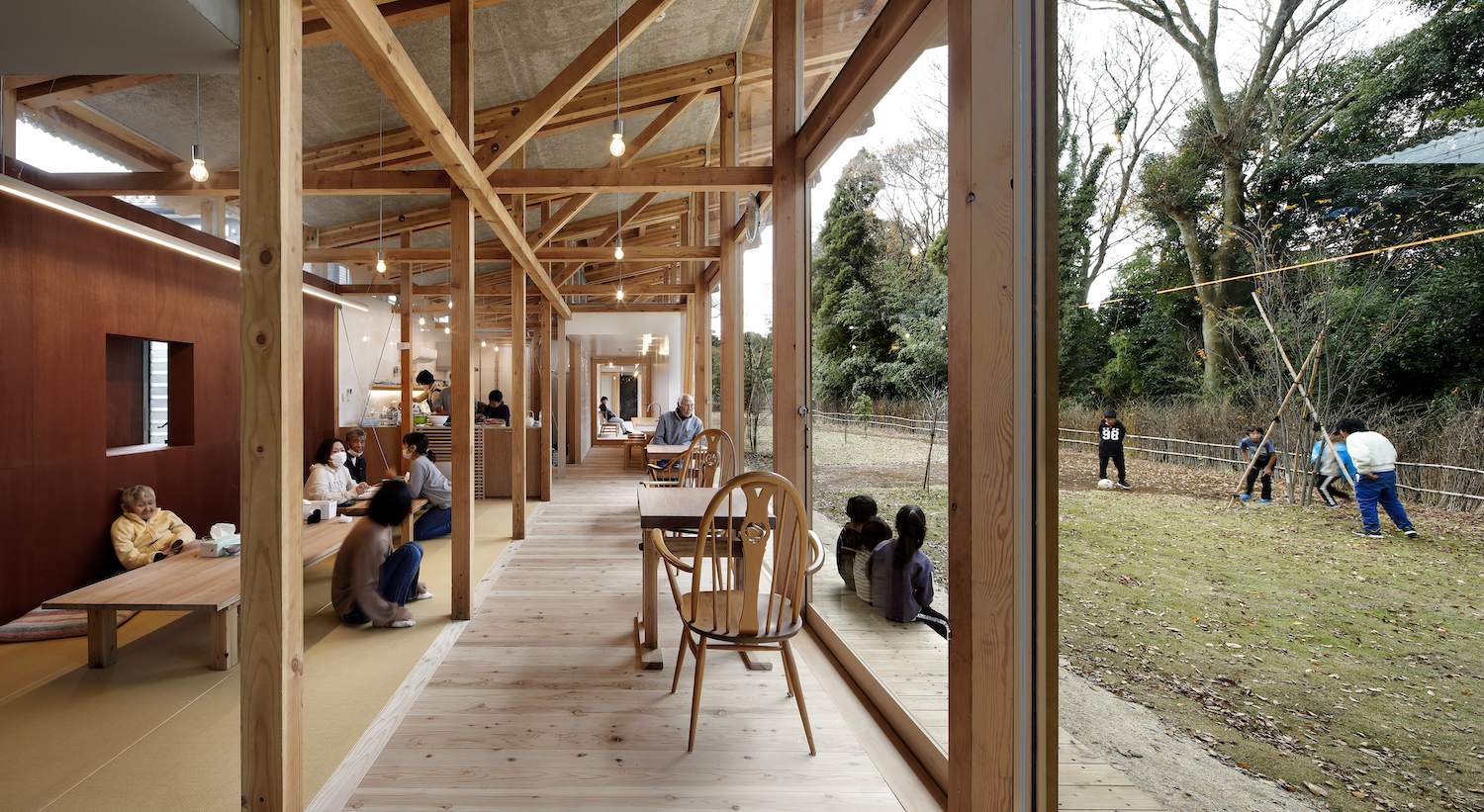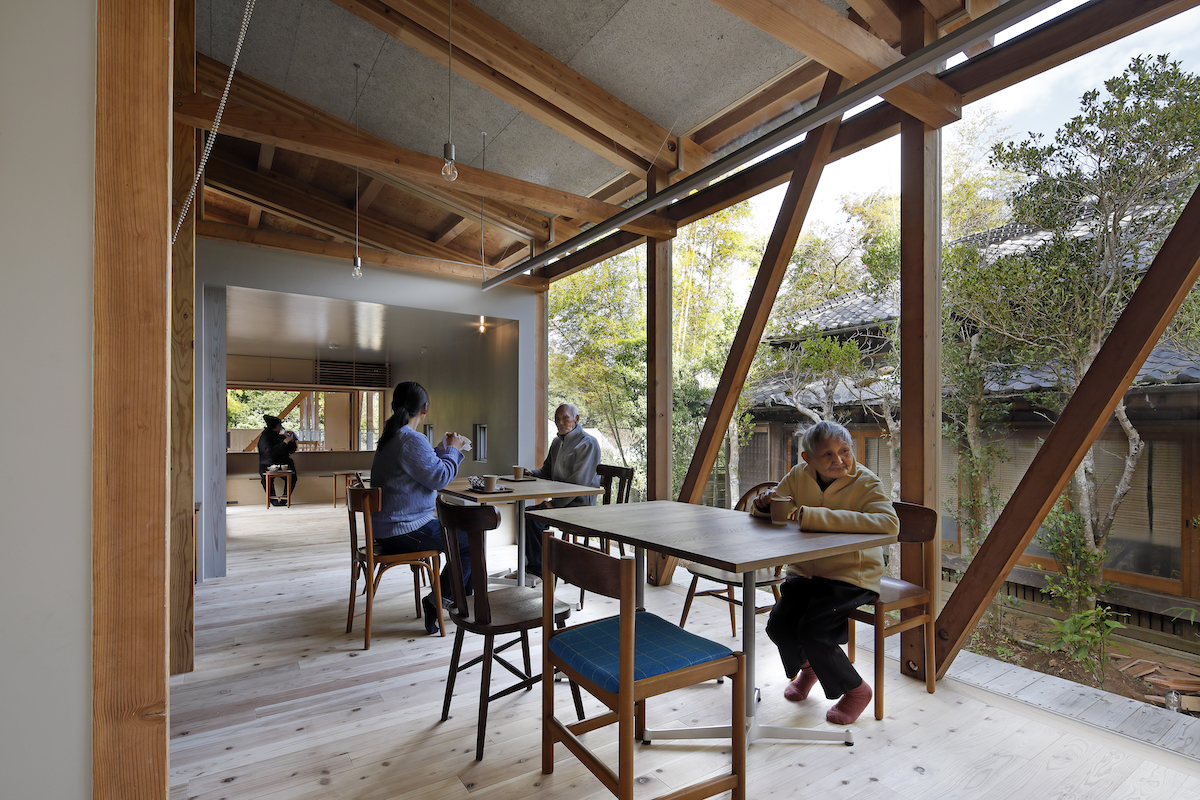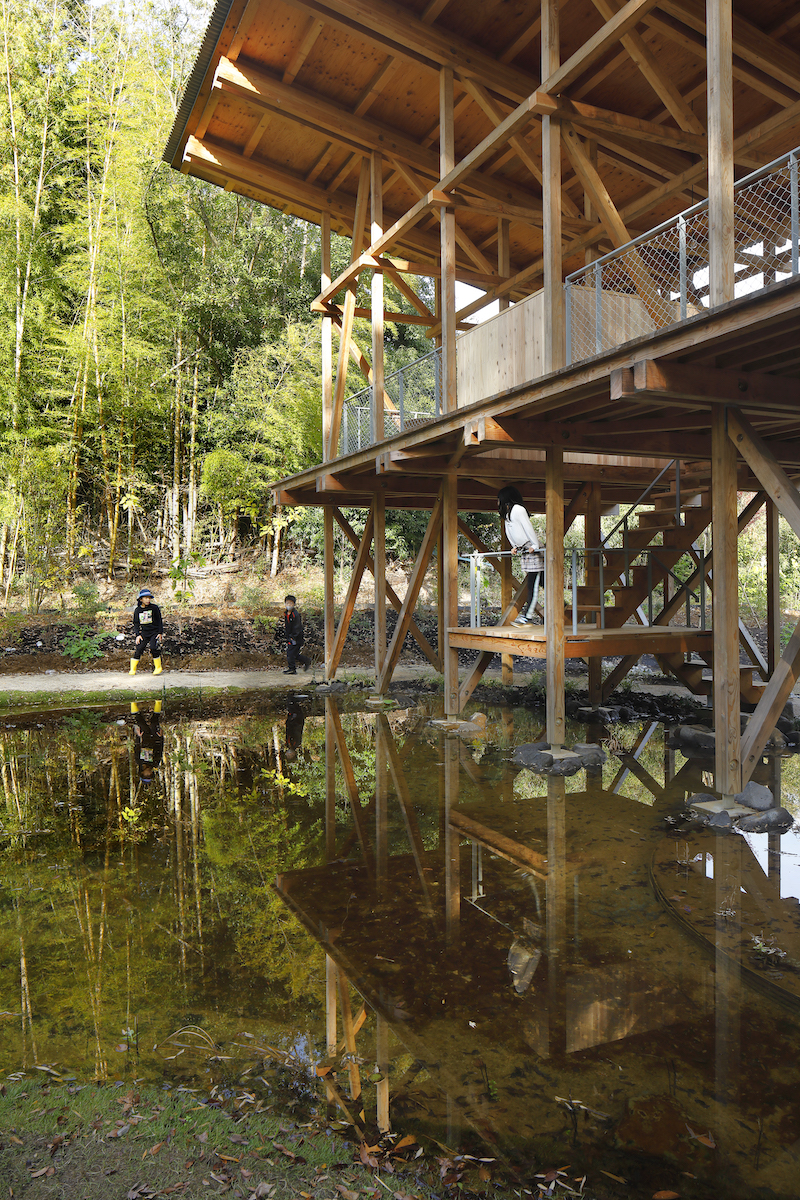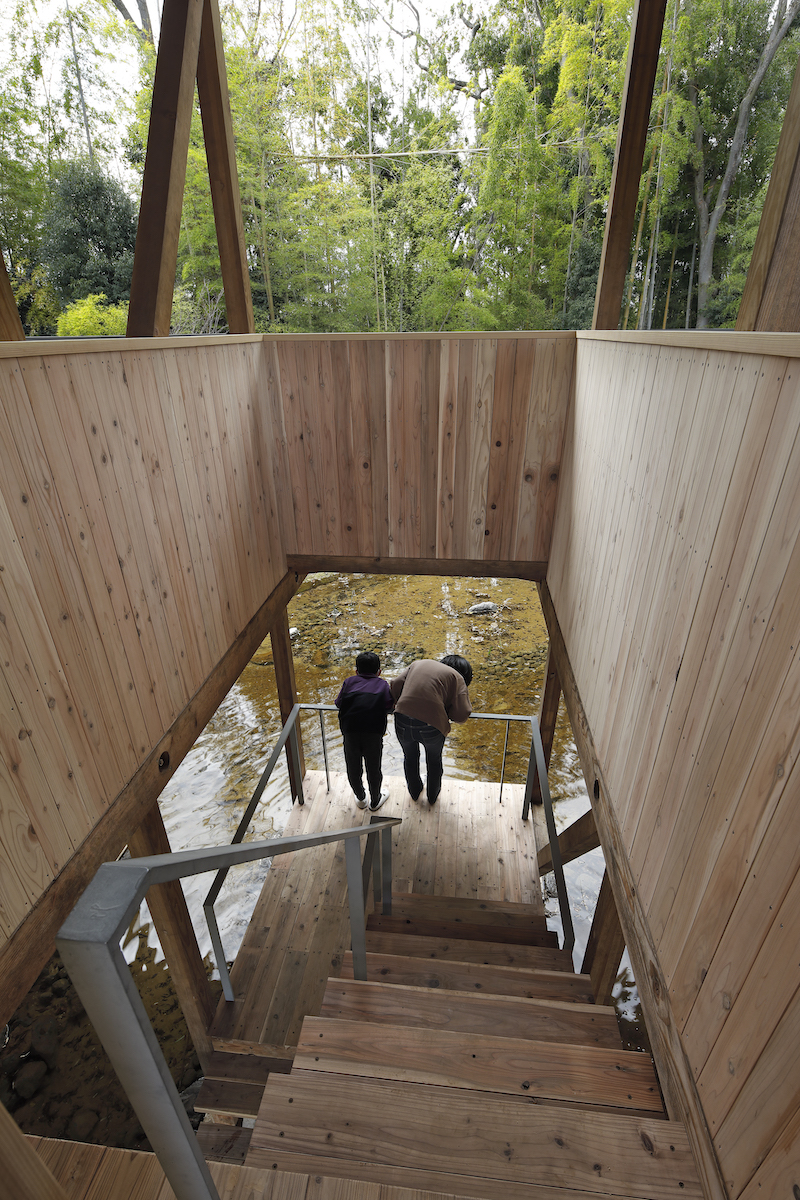Engawa is a typical element of traditional Japanese residential architecture. It consists of a covered wooden walkway that runs around the perimeter of courtyards in Japanese family homes. The sliding doors of the spaces and rooms of the home open onto it, therefore connecting the rooms and areas of the home. It is a transitional space between indoors and outdoors, between the intimacy of the house and the balanced beauty of the garden. Well, “Long House with an engawa” is the name given by the architectural studio Yamazaki Kentaro Design Workshop, to the day centre for the elderly, which is the subject of the architectural project we are discussing in this article.
The oblong wooden building has a longitudinal layout that justifies the term “longhouse”, and it also has a balcony, or engawa, running all the way around it. However, if we want to grasp the true essence of this architectural project, it is perhaps best to try to understand the motto with which Yamazaki Kentaro Design Workshop begins its presentation on the project’s website: “Remembering What We Have Forgotten Through Architecture“.
According to the architectural studio, the aim of Long House is to create an environment in which ageing is a natural part of everyday life, “even with dementia or another disability”. Accordingly, the building is to enable people to live a life of normality regardless of their condition. One way of achieving this laudable goal, is a design that is capable of integrating local society in a transversal manner, without distinction or separation.
Therefore, Long House has “outdoor spaces between three main functions: a café and workshop for local residents, a “living room” for the elderly, and a tatami room and bath that echo a traditional hanare (detached room)”. However, the boundaries between these spaces fade into a continuity that reflects the desired transversality. In doing so, the design in particular and the architecture in general ensure a “scattering of small but human-scale spaces” in which people can share time “even if they are by themselves”. This is how “connections are beginning to form between the elderly, the disabled, children, and other neighbours who gather here”.
The project has been set up with the collaboration of the developer, various non-profit organisations and the local population. In this way, Long House, reminiscent of a bridge or a temple, “is set to become a place of belonging for many kinds of people”. Now we really understand the idea that architecture helps us to remember “something important that modern Japan has lost” according to its authors, something that perhaps we have forgotten in many modern societies. We are sure that Yamazaki Kentaro Design Workshop is referring to the sense of community, to the idea of being part of a whole, of that collective life to which Long House is a testimony and tribute.
Source: Yamazaki Kentaro Design Workshop.
Images: Yamazaki Kentaro Design Workshop.


